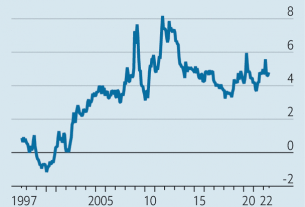
File image
The S&P 500 closed at another record high on Tuesday and the Nasdaq composite index jumped, as investors shook off concerns about the halt in Johnson & Johnson’s COVID-19 vaccine rollout and strong U.S. inflation.
The drugmaker’s shares hit a one-month low before recovering some losses to close down 1.3%, as calls for pausing the use of its COVID-19 vaccine after six women developed rare blood clots dealt a fresh setback to efforts to tackle the pandemic.
The news came as U.S. data showed the consumer price index (CPI) in March rose by the most in more than 8-1/2 years, kicking off what the majority of economists expect will be a brief period of higher inflation.
U.S. futures initially dropped on the J&J news, but pared losses after the CPI data. Solid demand for Tuesday’s U.S. Treasuries issue pushed down yields further, highlighting investors’ lack of concern about any imminent bump in interest rates.
Instead, in one of the year’s quietest sessions, high-flying technology names that flourished during coronavirus-induced lockdowns last year attracted renewed buying that boosted Apple Inc, Microsoft Corp and Amazon.com Inc. The trio gained between 0.6% and 2.4%.
The wider technology sector rose 1%, and the NYSE FANG+TM Index climbed 1.7% to a record 12th straight higher close.
The S&P 500 finished at record highs on Wednesday, Thursday and Friday last week.
“While (the J&J news) may cause some short-term volatility, investors have been pretty steadfast in their faith in a full economic recovery,” said Mike Loewengart, managing director at investment strategy at E*TRADE Financial.
The Dow Jones Industrial Average fell 68.13 points, or 0.2%, to 33,677.27; the S&P 500 gained 13.6 points, or 0.33%, at 4,141.59; and the Nasdaq Composite added 146.10 points, or 1.05%, at 13,996.10.
The volatility index, reflecting the lack of market jitters, hit a fresh 14-month closing low of 16.65.
“This year, 20 had proved to be a bit of a floor, but what we’ve seen from the start of this month is the VIX broke down through that level and established its trading range at mid-teens, which is notable for the broader risk environment as we enter earnings season,” said Greg Boutle, U.S. head of equity and derivative strategy at BNP Paribas.
First-quarter earnings season begins in earnest on Wednesday, with Goldman Sachs, JPMorgan and Wells Fargo reporting.
Analysts expect earnings for S&P 500 companies to have jumped 25% from a year earlier, driven by strength in consumer discretionary and financial companies, according to Refinitiv IBES data.
Cryptocurrency and blockchain-related firms Riot Blockchain and Marathon Digital Holdings gained 15% and 1.9% respectively as bitcoin prices soared 5.6%, a day ahead of the listing of Coinbase, the largest U.S. cryptocurrency exchange.
The volume on U.S. exchanges was 9.3 billion shares, versus the 11.4 billion average for the last 20 trading days.
Advancing issues outnumbered declining ones on the NYSE by a 1.06-to-1 ratio; on Nasdaq, a 1.11-to-1 ratio favored decliners.
The S&P 500 posted 43 new 52-week highs and one new low; the Nasdaq Composite recorded 60 new highs and 81 new lows.

